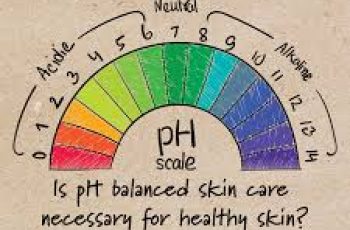
Can You Combine Vitamin C and Azelaic Acid in Skincare?
If you’ve been on your skincare journey for a while, you’ve likely heard all about Vitamin C and its amazing benefits. But Azelaic Acid? That one tends to fly under the radar—until now.
Azelaic acid may not be a household name just yet, but it’s rapidly becoming a cult-favorite thanks to its multitasking powers and gentle touch.
If you’re wondering whether you can mix Vitamin C and Azelaic Acid, the short answer is yes—and this guide will show you exactly how to do it safely and effectively.
What Is Azelaic Acid?
Azelaic acid is a dicarboxylic acid that naturally occurs in grains like barley, wheat, and rye. However, the type used in skincare is synthetically formulated for stability and safety.
It’s often confused with AHAs (like glycolic acid) or BHAs (like salicylic acid), but it’s in its own unique category.
Azelaic acid was originally developed to treat acne and rosacea, and today, it’s celebrated for doing much more.
It has antibacterial, anti-inflammatory, and exfoliating properties, all in one gentle ingredient.
It helps to:
Unclog pores
Reduce redness and inflammation
Treat hyperpigmentation and dark spots
Smooth uneven texture
Calm conditions like rosacea
Unlike many acids, azelaic acid is very well tolerated, even by people with sensitive skin or redness-prone complexions.
What Does Vitamin C Do for the Skin?
Vitamin C, also known as ascorbic acid, is one of the most popular and widely used ingredients in modern skincare.
It’s a powerful antioxidant that protects your skin from free radicals caused by sun exposure, pollution, and stress.
Vitamin C helps to:
Brighten the complexion
Fade dark spots and hyperpigmentation
Stimulate collagen production
Improve skin firmness and elasticity
Defend the skin against UV damage
It’s available in various forms—some more stable than others—and is best used in the morning for maximum protection.
Can You Use Vitamin C and Azelaic Acid Together?
Yes, Vitamin C and Azelaic Acid can be used together, and they actually complement each other quite well.
Both ingredients are known for their brightening and anti-inflammatory properties.
When used together, they work synergistically to:
Even out skin tone
Reduce post-acne marks and pigmentation
Combat oxidative stress
Improve skin texture and clarity
However, it’s important to introduce them gradually, especially if you have sensitive or dry skin.
How to Use Vitamin C and Azelaic Acid in the Same Routine
While you can layer them, it’s often better to use them at different times of day.
This reduces the risk of irritation and allows your skin to benefit fully from each ingredient.
Suggested Routine:
Morning: Vitamin C serum
Evening: Azelaic Acid gel or cream
Vitamin C works best during the day to fight environmental stress, while azelaic acid helps calm skin and target pigmentation overnight.
This alternating schedule keeps things gentle and prevents your skin from becoming overwhelmed.
How to Layer Them If You Want to Use Both Together
If you’re determined to layer them in the same routine, here’s how to do it:
Cleanse your skin with a gentle, non-stripping cleanser
Apply Vitamin C serum first—this is usually the thinner formula
Let it absorb for 2-3 minutes
Apply Azelaic Acid cream or gel
Follow with moisturizer
Finish with sunscreen (AM routine only)
Make sure both products are low in alcohol and fragrance to minimize irritation.
Can You Use Azelaic Acid with Other Ingredients Too?
Yes! Azelaic acid is extremely versatile and plays nicely with many other popular ingredients.
Here are a few combinations you can try:
Azelaic Acid + Niacinamide
Both ingredients target:
Inflammation
Uneven tone
Post-acne scars
Skin texture
Niacinamide helps lock in moisture, while azelaic acid exfoliates and clears out pores. This duo is especially great for oily, acne-prone, or sensitive skin.
Azelaic Acid + AHA/BHA (Like Glycolic or Salicylic Acid)
Though it sounds intense, this combo is generally safe—if used correctly.
Alternate between these ingredients on different days or use them at different times (AM vs. PM).
This avoids over-exfoliating and gives your skin time to adjust.
If irritation occurs, pull back and simplify your routine.
Azelaic Acid + Retinol
This combo is great for targeting acne and aging but should be used with care.
Start by using azelaic acid every other night and retinol 2–3 nights a week, gradually increasing frequency.
Always wear SPF during the day, as this combination can make your skin more sensitive to sun.
Which Is Better: Azelaic Acid or Vitamin C?
If you’re deciding between them, the answer depends on your skin type and goals.
Choose Vitamin C if your main concerns are dullness, fine lines, or sun damage.
Choose Azelaic Acid if you struggle with redness, acne, or rosacea.
That said, you don’t have to choose—they can be used together for even better results.
The key is to introduce them slowly and pay attention to how your skin responds.
Can You Mix Vitamin C With Acids Like AHA or BHA?
Yes, but this pairing is a little more advanced and should be approached with caution.
Acids like glycolic or salicylic exfoliate the skin, while vitamin C is sensitive to pH levels.
Here are two safe ways to combine them:
Option 1: Use Vitamin C and Acids at Different Times
Use Vitamin C in the morning and AHAs/BHAs in the evening. This helps maintain the right skin pH and reduces the risk of irritation.
Option 2: Use On Alternate Days
This is ideal for those with very dry or sensitive skin. Alternate days allow your skin time to recover while still getting benefits from both ingredients.
Patch Testing: Always a Good Idea
Before adding either Vitamin C or Azelaic Acid to your routine, do a 24-hour patch test.
Here’s how:
Apply a small amount of product to the inside of your forearm
Leave it on overnight
Check for redness, swelling, or irritation the next morning
If your skin reacts, don’t apply the product to your face. If not, you’re likely good to go.
Who Should Avoid Combining These Ingredients?
If you have ultra-sensitive skin or are experiencing active irritation or eczema, hold off on introducing both ingredients at once.
Instead, try starting with just azelaic acid, since it’s generally milder than Vitamin C.
Once your skin has adjusted, you can try adding Vitamin C into the mix.
Always use sunscreen during the day, as both ingredients can increase sensitivity to sunlight.
Conclusion: A Bright and Balanced Combo
Azelaic acid and Vitamin C are both amazing ingredients—and they absolutely can be combined.
Together, they fight dullness, acne, pigmentation, and inflammation while helping your skin look clearer, brighter, and healthier.
Here’s the winning formula:
Use Vitamin C in the morning
Use Azelaic Acid in the evening
Always apply sunscreen daily
Introduce products gradually and thoughtfully
By doing this, you’ll avoid irritation and enjoy the skin-transforming power of two incredible ingredients—without the confusion or overwhelm.


